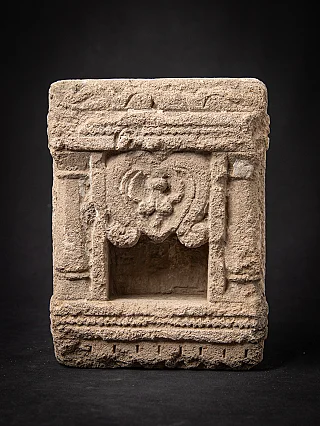Maitreya Buddha - The Future Buddha
Author : Peter Vredeveld

Maitreya Buddha is said to be the Future Buddha. In various Buddhist sutras such as Amitabha Sutra and Lotus Sutra, Maitreya Buddha is believed to be called Ajita.
In the world of Buddhist eschatology, Maitreya means the future Buddha. Maitreya Buddha is considered the 5th Buddha that is believed to appear in this Kalpa or era. Thus, Maitreya Buddha is regarded as the Future Buddha yet to appear in this age. In various Buddhist sutras such as Amitabha Sutra and Lotus Sutra, Maitreya Buddha is believed to be called Ajita.
Origin

According to Buddhist history and tradition, Maitreya Buddha is believed to be a Bodhisattva who will appear on the Earth in the future, achieve Nirvana, and teach the people of Earth the pure Dharma, just like Shakyamuni Buddha did. According to Buddhist texts and scriptures, Maitreya Buddha is the successor of the living Buddha, i.e., Gautama Buddha. The Prophecy of Maitreya Buddha coming back to the terrestrial world is written in the most significant Schools of Buddhism in many Buddhist countries.
Maitreya in Buddhist Scriptures
Maitreya Buddha is deeply rooted in various Buddhist scriptures and texts, where the future Buddha is often mentioned and prophesied. References to Maitreya can be found in the Amitabha Sutra, Lotus Sutra, and other critical Buddhist scriptures across different traditions. These scriptures provide insights into Maitreya's characteristics and attributes and emphasize the significance of his role in the future of Buddhism.
See here our Maitreya Buddha statues
Symbolism and Attributes
Many Maitreya Buddha statues and images are shown with different attributes, such as hand mudras and postures. The Maitreya Buddha statues represent all the attributes that must be in the characteristics of Bodhisattva. Most of the Buddha statues of Maitreya Buddha are depicted with both hands using Dharmachakra Mudra.
Maitreya Buddha is also represented as holding a lotus flower in each hand of the statues. Each hand also possessed a Wheel of Dharma and a ritual base. The Wheel of Dharma and the ritual vase are shown on the top of a lotus flower. The wheel of Dharma on the top of the lotus indicates that Maitreya Buddha emphasizes his mission to spread and teach Dharma to all beings. The Ritual vase on the top of the lotus shows that Maitreya Buddha was born into a low-caste family. In contrast, Buddhist history shows that Shakyamuni Buddha was born into a high-caste family.
Devotional Practices and Beliefs

Devotional practices to Maitreya vary across different Buddhist traditions. In Mahayana Buddhism, Maitreya is revered as a bodhisattva who has attained enlightenment but remains in the world to assist others in their spiritual journey. Devotees often recite mantras and dharanis dedicated to Maitreya to invoke his blessings and guidance.
In East Asian Buddhism, particularly in China and Japan, Maitreya devotion has been a significant aspect of religious practice. Devotees aspire to be reborn in Maitreya's Pure Land, where they can continue their spiritual progress under his guidance. Rituals such as chanting sutras, making offerings, and performing acts of merit are common forms of devotion to Maitreya.
Some Buddhist schools, such as Tibetan Buddhism, emphasize cultivating lovingkindness and compassion to connect with the essence of Maitreya's teachings. Meditation practices focused on generating these qualities are seen as a means to align oneself with Maitreya's compassionate nature.
Maitreya in East Asian Buddhism
In East Asian Buddhism, Maitreya is often depicted as the future Buddha who will appear to teach the Dharma and lead beings to enlightenment. This belief is rooted in various Buddhist scriptures, including the Lotus Sutra and the Mahayana Mahaparinirvana Sutra, which prophesy the coming of Maitreya in the distant future.
Throughout East Asian Buddhist history, Maitreya devotion has been a prominent feature of religious life. Monks and laypeople venerate Maitreya through rituals, prayers, and meditation practices. Temples dedicated to Maitreya can be found across East Asia, where devotees come to pay homage and seek blessings.
Some East Asian Buddhist traditions associate Maitreya with the concept of a Pure Land, a celestial realm where beings can attain enlightenment more easily. Devotees aspire to be reborn in Maitreya's Pure Land, where they can continue their spiritual journey under his compassionate guidance.
Maitreya Beyond Buddhism
Beyond the confines of Buddhism, the figure of Maitreya has captured the imagination of people from diverse cultural and religious backgrounds. In Hinduism, Maitreya is sometimes equated with the future avatar of Vishnu, who will appear at the end of the current age to restore righteousness and order to the world.
In Taoism, Maitreya is seen as a manifestation of the Tao, the underlying principle of reality that governs all existence. Followers of Taoism may venerate Maitreya as a wise and compassionate sage who embodies the virtues of harmony and balance.
Even outside Asian religious traditions, Maitreya has found resonance among Western esoteric and New Age movements, where he is often depicted as a spiritual teacher who heralds a new era of enlightenment and transformation. Regardless of cultural or religious context, the figure of Maitreya continues to inspire hope and aspiration for a better world.
Laughing Buddha as Maitreya Buddha
Laughing Buddha is shown as the next Maitreya Buddha in Chinese Buddhism. Laughing Buddha is also believed to be a Bodhisattva and will be the next Maitreya Buddha. Various Buddha statues represent Maitreya Buddha, but Laughing Buddha is one of the most popular known Buddhas worldwide, especially for his fat belly and smiling face.
Share this page














































